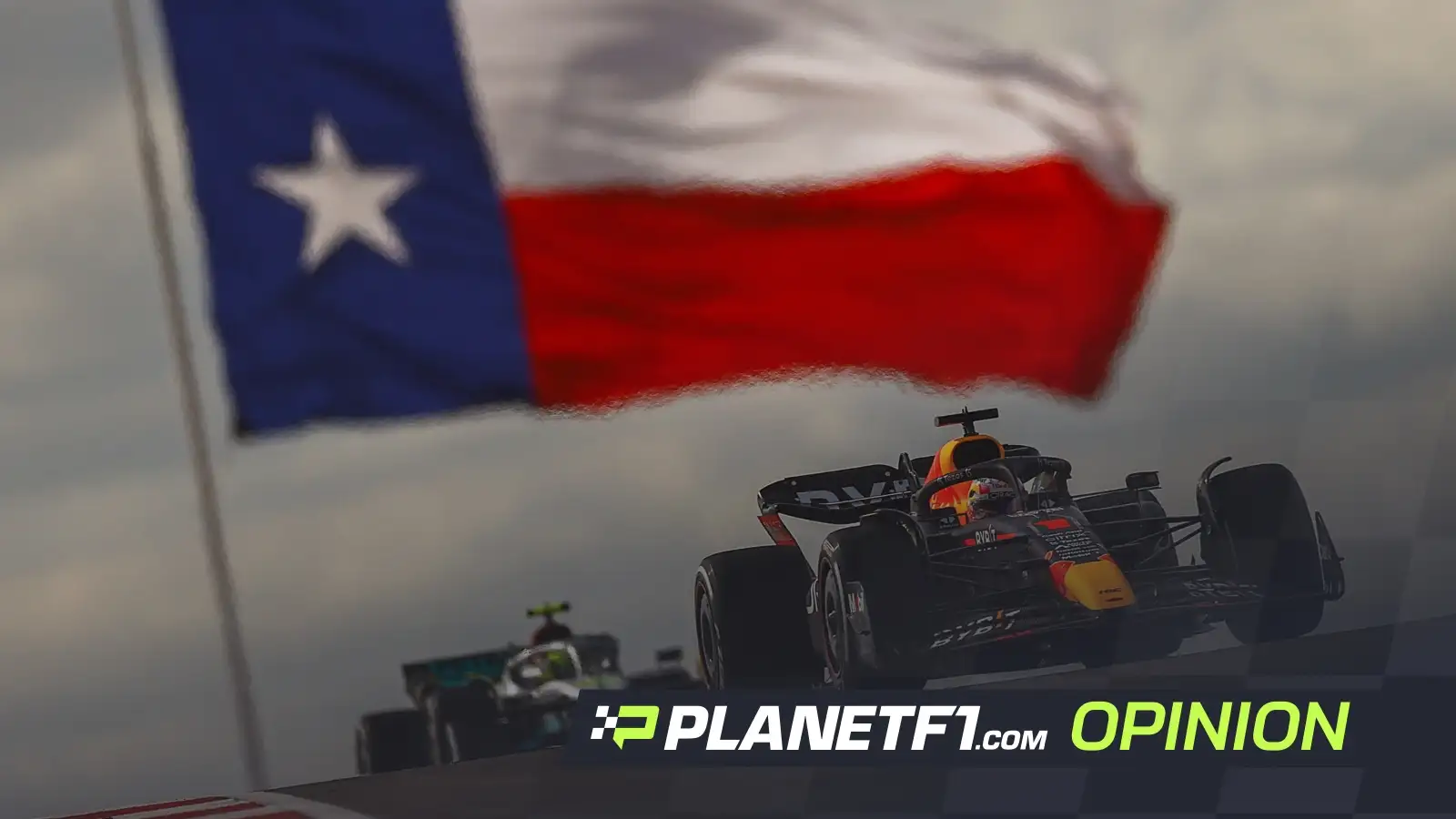F1 risk ruining American dream with Andretti backlash and sky-high ticket prices

Since Liberty Media took over, F1 has had a real focus on the US.
As F1 returns Stateside, is the sport at risk of losing an audience it worked so hard to gain?
Ask any long-term Formula 1 fan and they will all tell you the same thing. The sport has exploded in recent years. No longer is a niche subject you may feel embarrassed discussing at parties. It is now one of the biggest sports not only in its European heartland, but across the world.
No country has been more synonymous with the rise of F1’s popularity than the United States. A region that loves motorsport just like any other but was more concerned with its homegrown efforts. IndyCar and NASCAR were the nation’s loves and while F1 was certainly not an unknown subject, it was nowhere near as popular in the US as it is now.
The efforts to tame the US market can date all the way back to the early days of F1. From 1950 to 1960, the Indy 500 was an official event on the F1 calendar but with many of the regular drivers not turning up, it seemed very much supplanted in the sport rather than part of it.
In 1959, the US got its first official grand prix in the form of a race at Sebring Raceway. Two years later it moved to Watkins Glen, which became a permanent home until 1981 when the race fell off the calendar. From that point on, F1’s relationship with the US was more off-again, on-again.
That was until 2012 when the Austin race first appeared on the calendar. The race at COTA attracted its own unique crowd, almost as a safe place for the US F1 fans who had been forced to hide their passion up until then. The grand prix began to grow in size and interest. In 2012, 117,429 fans packed into the stands to watch the first race, five years later and the attendance figure reached 258,000.
But it was events away from the US that would prove to have the biggest impact on the sport’s fairing in the country. Bernie Ecclestone, a man who had a stranglehold on F1 for 40 years from his London home, received an offer of $8 billion for the sport from American mass media company Liberty Media.
As a US company, Liberty recognised better than anyone the untapped potential of the American market. Research by the Siena College Research Institute and St. Bonaventure University’s Jandoli School of Communication suggests 70% of America’s 330 million population are sports fans. The NFL generates $17 billion revenue a year, the NBA makes $7 billion. America has a huge appetite for sport and Liberty spotted the potential and profit in that.
Being ingrained in American culture, they knew what a traditional US sport fan wanted – more personality, fewer velvet ropes and more recognisable faces behind the mask. And thusDrive to Survivewas born. The impact of the Netflix series has been the biggest of any sports documentary. F1 was no longer a taboo subject but instead one that passed the ‘water cooler’ test.
PlanetF1.com建议
F1 stats: Which drivers have scored the most points without winning a race?
F1 Driver of the Day: Who has won the award in F1 2023?
“We’ve noticed a change in the conversation to where you’re not the only guy in the room that follows it,” COTA boss Bobby Epstein told the F1 Nation podcast this week.
“You call it water cooler talk. When you’re finding someone for a casual conversation at the office and all of a sudden they’re talking to you about things that you followed for a long time about their favourite driver, about the personality of it or the technology behind the cars.
“I think Austin, we’re a very tech savvy town. What we found is people are discovering what really goes into this racing. I think they’re connecting with that as well as the personalities that they found throughDrive to Survive.”
Expansion was always key to Liberty’s ploy as well. With viewership rising, the Miami Grand Prix was announced in April 2021. The Las Vegas announcement came in March 2022.
从理论上讲,这应该是自由媒体和制定a 1’s victory lap and yet there is a different feeling around the sport as it returns to North America.
The nature of the 2023 season and to an extent 2022 has not been beneficial to Liberty’s plan.Drive to Survivepromised non-stop thrills, tight title battles and drama up and down the paddock. 2021 provided that at a time when a wave of new fans were beginning to tune in on a Sunday.
But in 2023, there has hardly been a whiff. From the first race, it was clear Red Bull were champions elect and following a brief flicker of Sergio Perez being able to challenge Max Verstappen, that was suffocated as was the same with Charles Leclerc in 2022.
The sport has even been bereft of off-track drama. The ‘silly season’ was decidedly sensible. All but one of the drivers currently in the car have been confirmed for next year.
There was no Oscar Piastri/Alpine fall out, no fight about porpoising, no shouting matches between Toto Wolff and Christian Horner.
While F1’s traditional audience has found enjoyment in the fierce mid-pack fight, the new wave of fans have been left unsatisfied…but there is something else that has left a sour taste in American fans’ mouths – Andretti.
The Andretti name is one of the most legendary in US motorsport history. Driving success with Mario including an F1 and IndyCar title became ownership success with titles in IndyCar, CART, Indy Lights and Formula E. 21 drivers will race under the Andretti banner this year. It is one of the most recognisable brands and families in the US, up there with the Earnhardts and Penskes of the world.
Andretti have long wanted a return to F1 with the last time the name featured coming in 1993 with Michael at McLaren. But this time it is not a driver they are looking to support but instead a team itself. This interest is a result of the popularity explosion that Liberty themselves created and yet, it is the Liberty-owned Formula One Management (FOM) that appears to be the gatekeeper that will deny Andretti entry.
The prospective team have been forced to jump through many hoops. Bring value to the sport? They will race out of the US. Bring an original engine manufacturer? They have partnered with the eighth-biggest car company on the planet, General Motors. Pass the FIA Expression of Interest Process? They were the only one of four candidates to be given the green light.
Andretti have done just about everything asked of them and yet they face a very real possibility of falling at the final hurdle. It is this that has rubbed US fans up the wrong way.
If you have ever paid attention to the US’ relationship with sport, you will have noticed they want a home hero perhaps more than any other nation. A British fan would have no problem supporting Ferrari in the same way a French person may look past Alpine and to Red Bull or Mercedes. But in the US, there is a real desire for something that they can call their own.
Formula 1’s argument is they have that in Haas, but considering the majority of the team’s production comes from within the UK and Italy and the fact that owner Gene Haas is the only significant American in the team, US fans have not warmed to Haas perhaps as much as they would have expected.
Andretti on the other hand have promised to be the red, white and blue of the grid. Turning them away risks US fans believing it is their money Formula 1 is after, not their talent.
Speaking of money, that is another sticking point. No-one was expecting a cheap race when Las Vegas was added to the calendar but the prices have still surpassed what could be considered reasonable. A $5 million room at Caesars Palace was the most egregious offender but away from the upper limit, even the ‘standard’ rooms are priced high enough to make you wince.
100,000 are expected to be at the race each day and everyone of them is having to find hotels that are priced within the several thousands. Such was the greed by some of the casinos that the Las Vegas Review Journal reported in September that prices had fallen by 60% in an effort to get rooms filled. And that is just for the accommodation.
To sit in the grandstand for all three days will cost you a minimum of $2,000. The grandstand of which is located directly before a corner which means you will have roughly 30 seconds of action before the cars disappear from view. It is not just Vegas either. A three-day ticket for the Miami race next year will cost you $1,600.
The gimmick of expense is easy to point and laugh at from the outside but if you are a Formula 1 fan living on the West Coast who loves the sport more than the show, you have been priced out before a wheel has even spun.
It should also be remembered that the geography of the country does not make attending another race easy. Vegas is 1,000 miles away from Austin. If travelling from Silverstone, you could reach all but one of the other European races in less distance.
It is a point clearly not missed on those within the sport either.
“Certainly competition is said to be good,” Epstein continues. “So that just challenges us to do a better job and deliver a great product.
“Each event is unique in their personality. While the marquee and the lights of Vegas are something that we don’t have, we have campgrounds and hills, there’s other things to our advantage and we’ll lean heavily on those and we’ll also try and give the best value to the fans.
“We realise not everyone can afford a high-dollar ticket and while we have some high-dollar seats and some very VIP experiences, one of the things we pride ourselves on is being able to see lots of turns and use the hills and if you buy a GA ticket for a couple hundred on race day, you’ll still get to see a lot.”
The same cannot be said of Vegas and Miami with both in flat areas surrounded by buildings.
It seems then that Formula 1 is walking a tightrope in regards to its American audience. Lean too far one way and they may well undo all the foundations they spent years building up.
Read next:Christian Horner hits back at speculation of Helmut Marko feud






